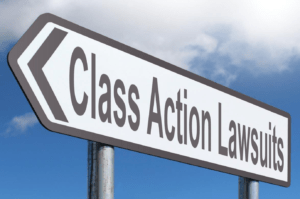Frequently Asked Questions about Class Action Lawsuits

Photo courtesy of Picpedia.org
Civil areas of law like personal injury and product liability exist to allow an injured party to hold a wrongdoer accountable for their actions. However, sometimes wrongdoers causing these injuries impact not only one person, but a large group of people. In this case, class action lawsuits provide the ideal remedy for a group of similarly-situated individuals seeking relief from a common wrongdoer. Given the increasing popularity of the class action in American courts, today’s blog discusses class actions from a conceptual level. Specifically, the post answers a few class action-related questions which, in our firm’s experience, are most commonly asked by plaintiffs involved in a class action.
What is a Class Action?
A class action is a type of lawsuit in which a group of similar individuals collectively file an action against the same defendant(s). Typically, the plaintiffs in a class action will also have suffered some sort of injury as a result of the same or similar conduct by the defendant. The rationale behind the class action concerns judicial administration, i.e., if a group of similarly-situated people all suffered the same injury caused by the same defendant, allowing these individuals to pursue their action as a group (rather than as several separate cases) promotes efficiency and saves judicial resources.
What does “Certification” Mean and Why is it Important?
Before a class action lawsuit can officially proceed as a “class” (i.e., as a collective group), the court must first “certify” the class. Class certification is a process in which a court determines whether the plaintiffs have sufficiently proven the required elements of certification contained in Rule 23 of the Federal Rules of Civil Procedure, and accordingly, whether they can proceed as a class. Specifically, courts determine if plaintiffs have demonstrated factors such as whether: (1) the class is so large that proceeding as separate cases would be impracticable; (2) “there are questions of law or fact common to the class”; (3) the plaintiff’s claims are typical of those of the class; and (4) the plaintiff(s) will fairly protect the interests of the class.
Who is the “Lead Plaintiff” in a Class Action?
The “lead plaintiff” is the individual who filed the action to begin with, and the one whose name will appear on case documents. This person is chosen either because they first contacted a lawyer regarding the alleged wrongdoing leading to the lawsuit, or because the plaintiffs’ attorney selected them as a responsible and reliable representative of the class. The lead plaintiff is expected to represent the interests of the entire class, and therefore, is typically tasked with monitoring the case and accepting or rejecting settlement offers. There can technically be multiple lead plaintiffs, but there usually are not more than four or five such individuals designed by the plaintiffs’ attorney.
How Many People Usually Join a Class Action?
Technically, there is no limit or cap on the number of individuals who can join a class action. Class actions have previously been certified with a small handful of involved plaintiffs, as well as with hundreds of thousands of plaintiffs. As a general rule, though, most courts will not certify a class with less than 20 plaintiffs, and plaintiffs’ lawyers usually try to gather a class of at least 40 individuals before seeking class certification.
How are Potential Class Members Notified of the Action?
Once the parties reach a settlement, Rule 23 requires the court to provide “reasonable” notice to every member of the class. While it is probably not possible to directly contact every potential class member, courts usually accept “reasonable” methods of notice such as email, physical mail, TV ads, newspaper ads, or custom websites. Potential class members may then choose to “opt-out” of the settlement, but in most cases, if a plaintiff does not actively opt-out then they will be automatically included in the class.
How are Class Actions Usually Resolved?
As with all types of civil cases, class action lawsuits rarely make it all the way to trial. In fact, this trend is even more prominent in the class action space in light of the heavy costs of litigating a class action through trial. Additionally, once a class action has been certified, defendants’ strategic defense options can become quite limited, so this further incentives parties to explore early settlement. Once parties agree to a settlement number, they must prove to the court that the proposed settlement is fair to all class members and allow class members the opportunity to object to the terms of the settlement.
What are the Differences Between Class Actions and Other Multi-Plaintiff Cases?
There are a few other types of multi-plaintiff actions that are readily distinguishable from class actions. For example, a “collective action” (which is usually filed under federal wage & hour or age discrimination statutes) mirrors a class action in several ways, with the main difference being that a collective action requires plaintiffs to actively “opt-in” to the case while a class action automatically includes affected plaintiffs unless they opt-out. Many readers may also have heard of a “mass tort” action, which typically includes a smaller group of injured plaintiffs. In contrast to a class action, which assesses the plaintiffs’ claims as a whole, courts in a mass tort consider each individual claim from each individual plaintiff.
If any readers have suffered an injury and are considering their legal options, do not hesitate to reach out to Coffman Law. Owner and Founding Partner Brian Coffman has handled virtually every type of personal injury matter, and through his experience defending corporate insurers for years prior to founding his own firm, Brian has also come to understand the strategies typically employed by insurance companies in these types of cases. Click HERE to contact our office for a free consultation.
About Coffman Law Offices, P.C.
Coffman Law is Chicago’s leading personal injury law firm and is committed to providing superb legal representation for people who are suffering from severe personal injuries or are dealing with the loss of a loved one due to negligence or misconduct. Coffman Law is results-driven law firm focused on ensuring that clients receive the compassion, attention, and consideration that they need to seek adequate compensation for injuries or loss. The firm is led by Owner and Founding Partner Brian Coffman, who has dedicated his career to helping accident victims navigate the legal system and obtain compensation for their injuries. If you have been injured or lost a loved one, contact Coffman Law today for a free consultation.




